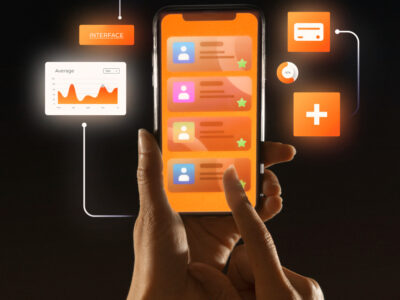
Virtual reality (VR) has rapidly evolved from a futuristic concept to a mainstream technology, revolutionizing various industries such as gaming, education, healthcare, and more. At the heart of this evolution lies virtual reality app development, which continues to push boundaries and introduce innovative trends. In this article, we delve into the transformative journey of VR app development, exploring emerging trends, key innovations, and the future outlook of this dynamic field.
1. The Emergence of Virtual Reality App Development
Virtual reality, once confined to science fiction narratives, became a tangible reality with the advent of advanced technologies. The development of VR headsets such as Oculus Rift, HTC Vive, and PlayStation VR laid the foundation for immersive experiences, prompting developers to explore the vast potential of virtual reality app development.
VR app development involves creating software applications that leverage VR technology to provide users with immersive experiences, simulations, or interactions. These applications span a wide range of domains, including entertainment, training, therapy, design, and beyond. As the demand for VR experiences grew, developers began to innovate and experiment with new approaches, leading to the emergence of diverse trends in the field.
2. Key Trends in Virtual Reality App Development
a. Cross-Platform Compatibility: With an increasingly diverse ecosystem of VR devices, developers are focusing on ensuring cross-platform compatibility for their applications. This trend allows users to access VR experiences across different devices, including VR headsets, smartphones, and PCs, enhancing accessibility and user engagement.
b. Immersive Storytelling: Virtual reality offers unparalleled opportunities for immersive storytelling, enabling users to step into the narrative and become active participants. VR app developers are leveraging this potential to create compelling narratives, interactive experiences, and emotionally resonant storytelling in various genres, from gaming to cinematic experiences.
c. Social VR Experiences: Recognizing the social nature of human interaction, developers are integrating social features into VR applications, enabling users to connect, communicate, and collaborate in virtual environments. Social VR experiences range from multiplayer games and virtual hangouts to collaborative workspaces, fostering social interaction and community building in virtual realms.
d. Augmented Reality Integration: Virtual reality app development is converging with augmented reality (AR) to create mixed reality experiences that blend the virtual and physical worlds. By integrating AR elements into VR applications, developers can enhance immersion, interaction, and realism, offering users dynamic and interactive experiences that combine virtual content with real-world environments.
e. Gesture and Voice Controls: As VR technology evolves, developers are exploring innovative input methods such as gesture and voice controls to enhance user interaction and immersion. Gesture recognition technology allows users to interact with virtual objects using hand movements, while voice commands enable hands-free navigation and control, providing a more natural and intuitive user experience.
f. AI-Powered Interactions: Artificial intelligence (AI) is playing an increasingly significant role in virtual reality app development, powering intelligent interactions, dynamic content generation, and personalized experiences. AI algorithms can analyze user behavior, preferences, and feedback to dynamically adapt virtual environments, characters, and challenges, creating personalized and responsive experiences for users.
g. Immersive Training and Simulation: Virtual reality has emerged as a powerful tool for training, simulation, and skill development across various industries, including healthcare, military, aviation, and manufacturing. VR app developers are creating immersive training simulations that replicate real-world scenarios, allowing users to practice skills, procedures, and decision-making in a safe and controlled environment.
h. Accessibility and Inclusivity: Inclusivity and accessibility have become key priorities in virtual reality app development, with developers striving to design applications that are accessible to users with diverse abilities and needs. This trend involves incorporating features such as customizable controls, text-to-speech functionality, and inclusive design principles to ensure that VR experiences are accessible to all users.
3. Innovations in Virtual Reality App Development
a. Haptic Feedback Technology: Haptic feedback technology simulates tactile sensations and force feedback, enhancing immersion and realism in virtual reality experiences. Developers are integrating haptic feedback devices such as gloves, vests, and controllers into VR applications to provide users with sensory feedback, physical interactions, and enhanced immersion.
b. Eye Tracking Technology: Eye tracking technology enables precise tracking of eye movements and gaze behavior, opening up new possibilities for interaction, user interface design, and physiological analysis in virtual reality. By integrating eye tracking into VR headsets and applications, developers can optimize rendering, enhance user engagement, and enable dynamic interactions based on gaze input.
c. Brain-Computer Interfaces (BCIs): Brain-computer interfaces (BCIs) enable direct communication between the brain and computer systems, allowing users to control devices and interact with virtual environments using brain signals. VR app developers are exploring the potential of BCIs to create immersive experiences, neurofeedback applications, and assistive technologies that leverage brainwave data for interaction and control.
d. Blockchain Integration: Blockchain technology is being integrated into virtual reality applications to enable decentralized ownership, secure transactions, and digital asset management within virtual environments. By leveraging blockchain technology, developers can create virtual economies, digital marketplaces, and ownership systems for virtual assets, enhancing security, transparency, and user autonomy in VR experiences.
e. Generative Design and Procedural Content Generation: Generative design techniques and procedural content generation algorithms are being employed to create dynamic and infinitely varied virtual environments, characters, and experiences in VR applications. By harnessing generative algorithms, developers can automate content creation, optimize resource utilization, and deliver personalized and endlessly replayable experiences to users.
f. Environmental Sustainability: Environmental sustainability has become a focus area in virtual reality app development, with developers exploring eco-friendly practices, energy-efficient design, and carbon-neutral technologies to reduce the environmental impact of VR experiences. This trend involves optimizing hardware and software components, adopting renewable energy sources, and implementing eco-conscious design principles to create sustainable VR applications.
4. The Future Outlook of Virtual Reality App Development
Virtual reality app development is poised for continued growth and innovation, driven by advancements in technology, evolving user expectations, and expanding application domains. As VR technology becomes more accessible, affordable, and widespread, the demand for immersive experiences and virtual applications is expected to soar across various sectors.
The future of virtual reality app development holds exciting possibilities, including:
- Enhanced Realism and Immersion: Advancements in display technology, haptic feedback, and sensory interfaces will lead to enhanced realism and immersion in virtual reality experiences, blurring the lines between the virtual and physical worlds.
- Artificial Intelligence and Personalization: AI-driven content generation, adaptive environments, and personalized experiences will become increasingly prevalent, tailoring virtual reality applications to the unique preferences, behaviors, and contexts of individual users.
- Social and Collaborative Experiences: Social VR platforms, multiplayer games, and collaborative environments will continue to evolve, enabling users to connect, interact, and collaborate in shared virtual spaces, irrespective of physical distance.
- Enterprise Adoption and Training Solutions: Virtual reality will see increased adoption in enterprise settings for training, simulation, remote collaboration, and visualization applications, driving demand for custom VR solutions tailored to specific industry needs.
- Healthcare and Therapeutic Applications: Virtual reality will continue to play a significant role in healthcare, rehabilitation, and therapy, with VR applications being used for pain management, mental health treatment, medical training, and patient education.
- Education and Learning Platforms: Virtual reality will revolutionize education and learning experiences, offering immersive simulations, virtual classrooms, and interactive content that enhance engagement, retention, and knowledge transfer.
In conclusion, virtual reality app development has undergone a remarkable evolution, driven by technological advancements, creative innovation, and growing demand for immersive experiences. From immersive storytelling and social VR interactions to AI-powered simulations and haptic feedback technology, the landscape of VR app development is rich with possibilities and opportunities. As we look towards the future, virtual reality promises to reshape industries, transform human experiences, and unlock new realms of imagination and possibility.








